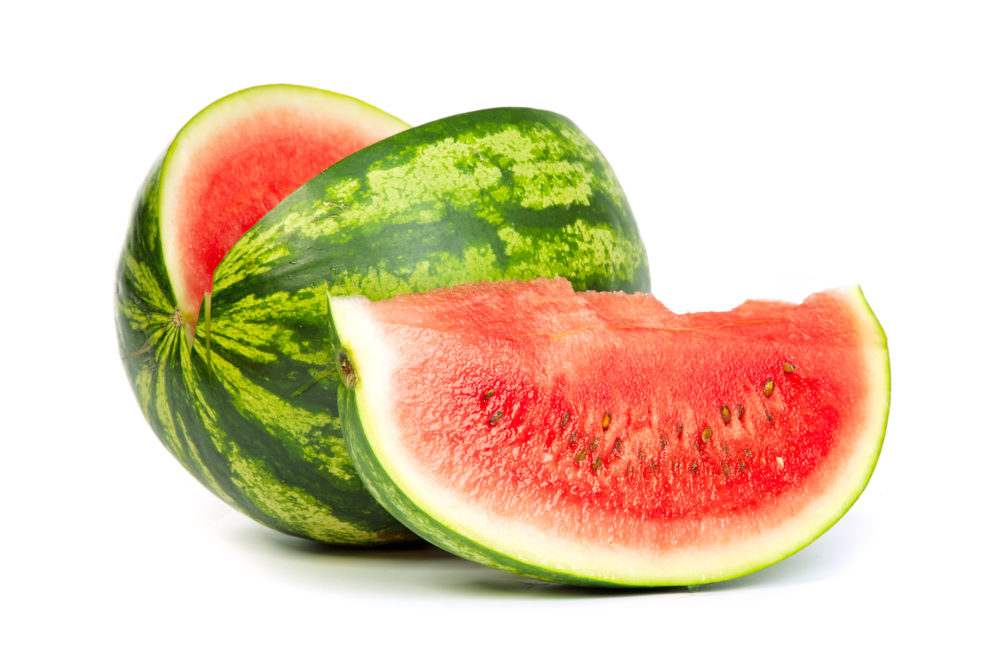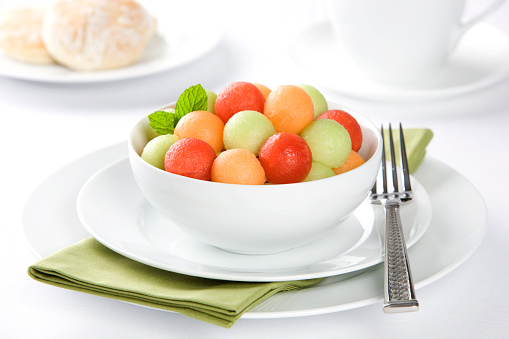Melons, Watermelon

Availability:
| J | F | M | A | M | J | J | A | S | O | N | D |
Description:
- Scientific Name: Citrullus lanatus.
- Usage: eaten fresh (cubed, sliced, etc.), also used to flavor summer drinks and smoothies; often used in fruit salads. Watermelon rinds are also edible, and sometimes used as a vegetable. In China, they are stir-fried, stewed, or more often pickled.
- Outside Coloring: green and yellow or cream.
- Shape: round to oblong.
- Size: sizes of these melons can range from ten to twenty-five pounds.
- Skin Texture: smooth with thick skin/rind.
- Flesh Description: very crisp, juicy, sweet pink-red flesh
- Taste: very sweet and refreshing.
- Size: up to 24” long large.
Receiving Information:
- Preparation: Melons are usually served slightly chilled with just a squeeze of lemon or lime juice. They can also be eaten plain, used in salads, and make terrific, healthy desserts.
- Selection: Shoppers should look for watermelon that is firm, heavy for its size and shows no signs of decay.
- Ripeness: Since most melons are sold slightly under-ripe, they need to be purchased a few days before they are to be eaten so they can develop maximum flavor.
- Health: Watermelon’s red color is caused by lycopene, a carotenoid pigment that is believed to be a powerful antioxidant that helps fight cancer and other diseases.
Storage/Handling:
- Optimum Temp (F): 50 – 60F \ 10.0 – 15.6 C
- Optimum Humidity: 90 – 90 %
- Storage Life (Days): 14 – 21
- Ethylene Producer: No
- Ethelyne Sensitive: No
- Water Sprinkle: No
- Odor Producer: No
- Ripens After Harvest: No
- Mist: No
- Top Ice: No
- Odor Sensitive: No
- Unripe: If you feel that your watermelon is not ripe, holding product at room temperature can improve flavor and coloring.
- Mealy or soft flesh: Indication of ethylene exposure – keep watermelon separated from ethylene-producing produce. Do not store near ripening rooms.
- Pitting of rind; off flavor; loss of color: Indication of chill injury – do not store watermelon below 41 degrees F/5 degrees C.


